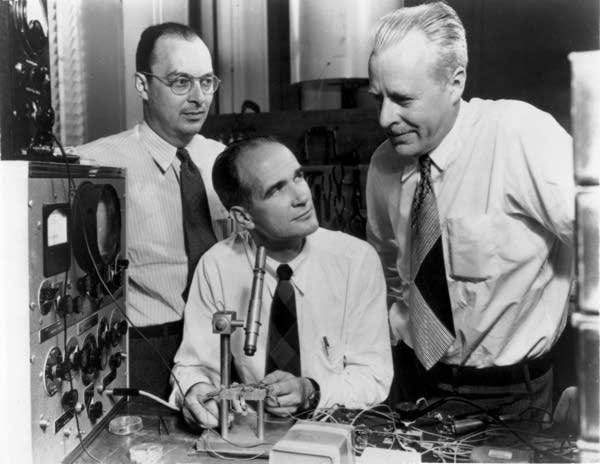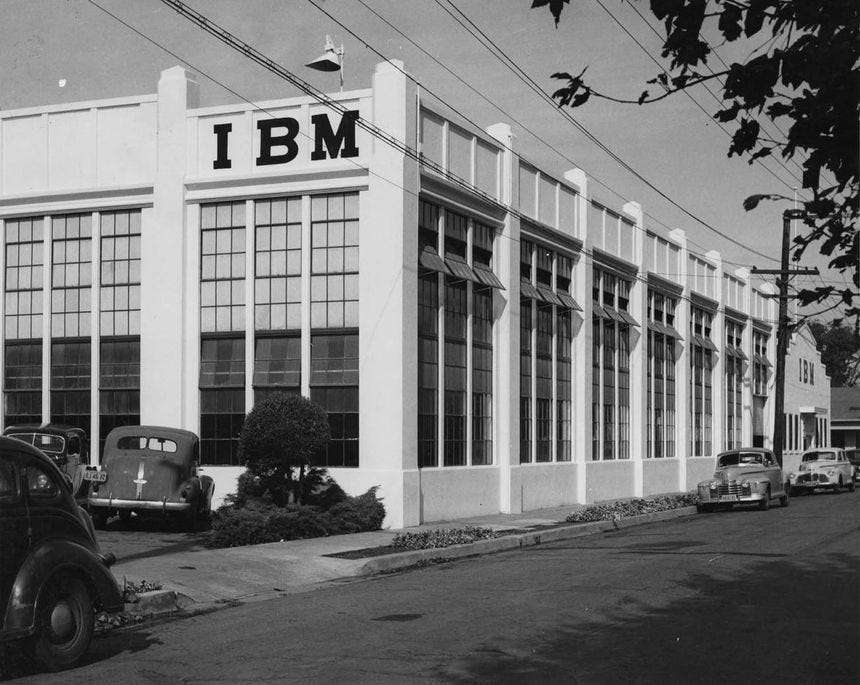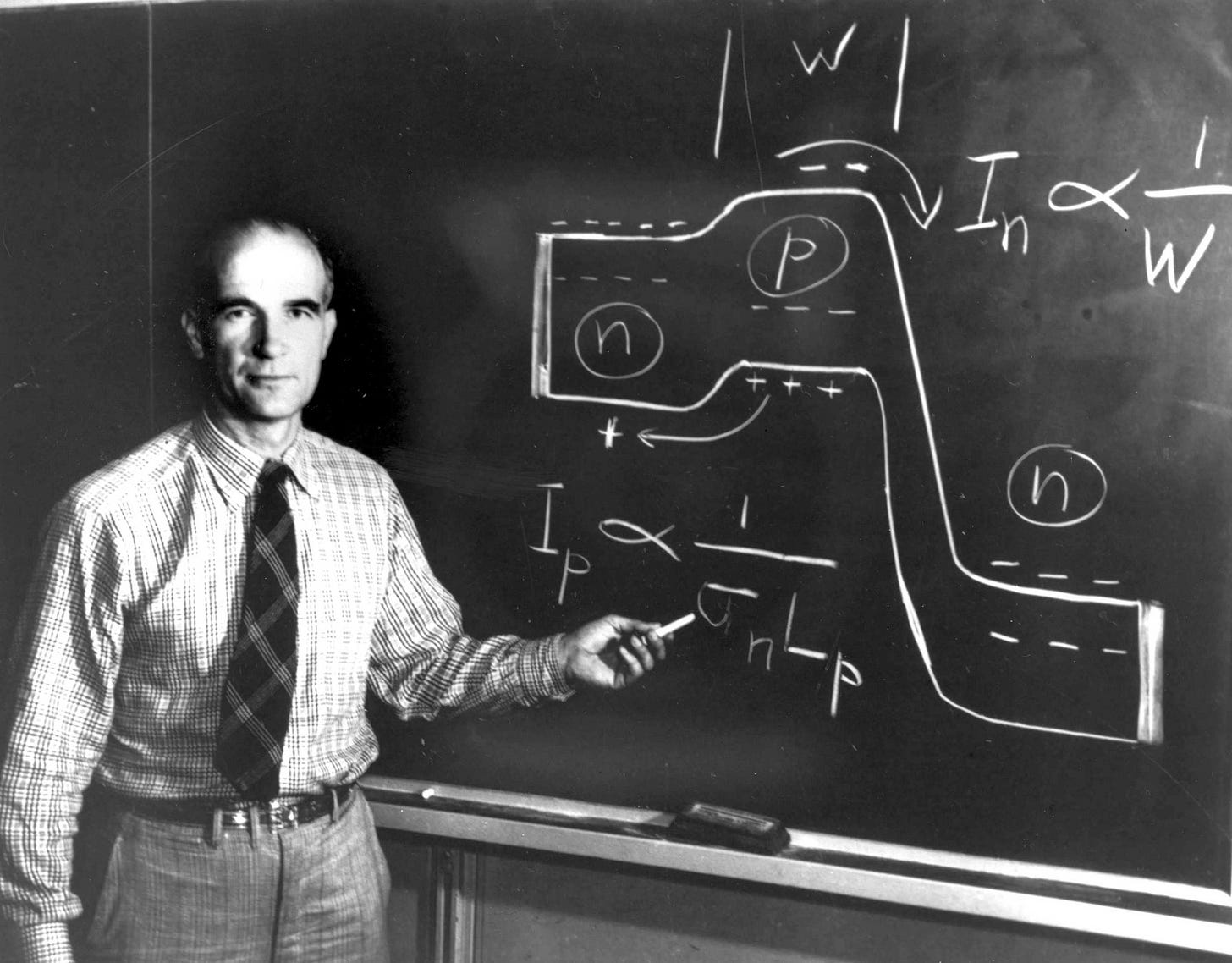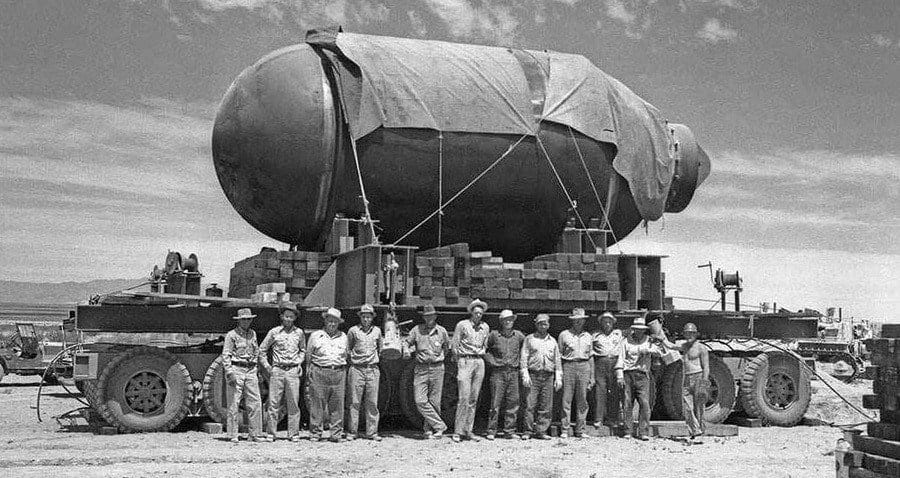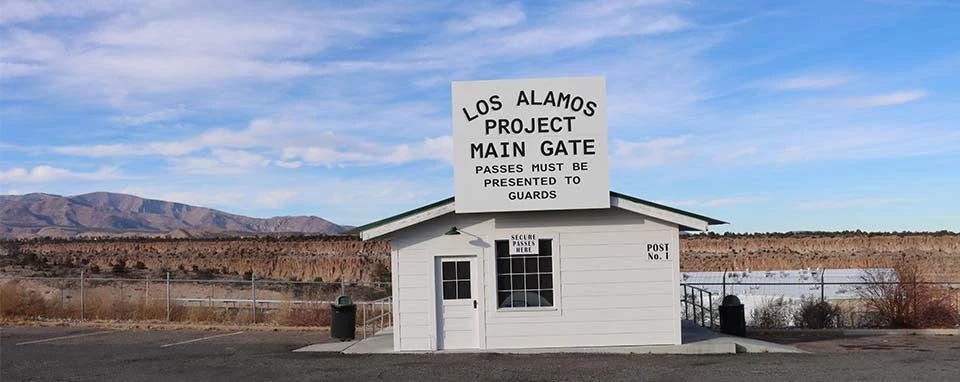Reverse Engineered: The Extraterrestrial Blueprint Behind Our Modern Tech Revolution
In July of 1947, something crashed in the desert outside Roswell, New Mexico. You’ve heard the story: a farmer finds strange debris, the Army says it's a “flying disc,” then walks it back within 24 hours—calling it a weather balloon.
But what if that story was just the first layer of a much deeper deception?
What if Roswell was only one piece of a much larger pattern—a coordinated series of retrievals that marked the real beginning of the technological age? Not one driven by scientific discovery… but by covert exploitation.
Just weeks before Roswell, another lesser-known incident occurred near Alamogordo, New Mexico—home to the White Sands Missile Range, where the first atomic bomb had been tested just two years earlier. According to multiple military whistleblowers, a separate craft was recovered in that area—larger, more intact, and possibly still operational at the time of retrieval. While Roswell got the headlines, Alamogordo may have yielded the actual hardware that was quickly funneled into black project labs and off-books development programs.
And then there’s the Vatican.
Yes, the Vatican.
Recently declassified intelligence and insider accounts suggest that sometime during or just after World War II, the Vatican came into possession of a downed UFO or intact craft—a relic allegedly recovered in Europe and hidden beneath the vaults of the Holy See. Under intense postwar pressure, the Vatican allegedly handed this object over to the United States, in what’s now quietly referred to by some researchers as the "Vatican Exchange."
The location? Wright-Patterson Air Force Base, the same facility where Roswell materials were rumored to be taken. The timing? Between 1945 and 1947.
Let that sink in.
In the span of less than two years, the U.S. military—and possibly its allies—gained access to at least three separate craft of unknown origin. One from Europe via the Vatican, one from the deserts near Roswell, and another from the high-security missile zone of Alamogordo.
This wasn't just a moment in history. This was a convergence. A harvest. A handoff.
And the results were immediate.
Because here’s the thing no one talks about:
The transistor—the building block of modern electronics, the spark that ignited the entire digital revolution—was announced by Bell Labs in late 1947.
The same year as Roswell.
The same year as Alamogordo.
The same year the Vatican quietly handed over its ancient secret.
A new age didn’t begin with discovery. It began with recovery.
And from that point forward, our technological timeline was no longer organic. It was guided—by something we barely understood, and certainly didn’t create.
Coincidence?
Or were we building a digital world… with alien blueprints?
🚨 The “Coincidence” That Wasn’t
How did we go from radio tubes to thinking machines in one lifetime?
The computer revolution didn’t evolve like fire or the wheel. It didn’t unfold over centuries. It erupted—a technological supernova condensed into just a few decades.
As if someone handed us the answers, and we spent the next 80 years trying to decode them.
Let’s walk the timeline:
🛸 1947 – Roswell & Alamogordo
Two crashes: Roswell, and another near Alamogordo, New Mexico.
Both in proximity to nuclear facilities—suggesting intentional interest or targeting.
Alleged recovery of materials with memory-metal properties, unknown isotopic ratios, and advanced control systems.
Eyewitnesses report biologically reactive craft, suggesting neural interfaces far beyond our time.
At the same time...
🧠 1947 – Bell Labs Announces the Transistor
Suddenly replaces bulky vacuum tubes with a tiny, solid-state component.
No clear lineage of iterative development—just boom: world-changing tech appears.
Founders later admitted they didn’t fully understand why it worked so well.
The transistor birthed modern electronics, yet it arrived with suspicious timing. Within months of UFO crash retrievals.
💡 1958 – The Integrated Circuit
Jack Kilby (Texas Instruments) and Robert Noyce (Fairchild Semiconductor) “independently” invent the integrated circuit—microchips that combine multiple transistors.
This is the birth of computational miniaturization.
Where did the sudden understanding of such complex architecture come from?
No one explains the jump from one transistor to hundreds on a single silicon wafer.
💻 1950s–1960s: The Birth of Silicon Valley
At first glance, Silicon Valley looks like a product of entrepreneurial genius—garage startups, bold venture capitalists, and brilliant engineers. But the real story is much more entangled with government contracts, military secrecy, and postwar black projects.
In the 1950s, Stanford University—under the guidance of Frederick Terman, a former WWII military radar engineer—began leasing land to defense-linked tech startups. Companies like Fairchild Semiconductor, Varian Associates, and later Intel weren’t born in basements. They were born on military contracts.
Many of these early firms were staffed by scientists with backgrounds in:
Bell Labs
Los Alamos
Manhattan Project-related R&D
They brought with them not only semiconductor expertise, but a culture of compartmentalization, security clearances, and unexplained breakthroughs in miniaturization and materials science.
The region quickly became the civilian front for military technology development—a perfect cover for deploying whatever "discoveries" needed public-facing innovation pipelines.
Was Silicon Valley truly built on innovation... or instruction?
💾 1971 – Intel 4004: The First Microprocessor
Ted Hoff and Federico Faggin at Intel compress an entire CPU into a single chip.
The microprocessor becomes the brain of the modern computer.
And here’s the kicker:
Faggin later worked with Carlo Rubbia, a Nobel Prize-winning physicist who consulted on particle acceleration and anomalous materials—some say linked to government UFO research.
🖥️ 1980s–2000s – AI Goes Biological
Inspired by the structure of the brain, neural networks emerge: systems that “learn” like we do.
Models begin mimicking neural mapping, pattern recognition, and adaptive behavior.
DARPA funds early AI brain-mapping projects. Some claim they were based on non-human models studied in secret.
What kind of brain were we trying to copy?
🔬 1990s–2000s – Material Sciences Leap
Fiber optics, night vision, invisibility materials, and energy-beam weapons begin to emerge in military programs.
Official documents point to unknown alloys, now proven to resemble materials recovered from alleged UFO crashes.
🔮 2010s–Now – Quantum Computing and Entangled Qubits
Google, IBM, and D-Wave begin building quantum systems that process data using the rules of entanglement—a realm Einstein called “spooky action at a distance.”
U.S. Navy patents emerge describing inertial mass reduction, zero-point energy, and high-frequency gravitational manipulation (Salvatore Pais, 2016–2020).
These concepts align eerily with whistleblower claims about how UFOs operate—through vacuum energy manipulation and space-time folding.
📉 The Supposed “Progression” Wasn’t a Straight Line
There’s no conventional path of step-by-step breakthroughs here.
Each phase of development appears non-linear, as if some external force was feeding us bits of a larger puzzle. And when you overlay the timeline of UFO crash retrievals, Vatican handovers, and black budget expansions, the pattern sharpens.
It’s not that we created the future.
It’s that we inherited it—in fragments, through hidden corridors, and at a pace controlled by those who found it first.
The question is no longer did we reverse-engineer alien technology?
The question is:
What haven’t they given us yet?
🧬 Behind the Invention: Bell Labs, Los Alamos, and the Manhattan Connection
The official story tells us that a few brilliant minds at Bell Laboratories changed the world in 1947 by inventing the transistor—a breakthrough that sparked the digital age.
But what if that story is only half true?
What if Bell Labs didn’t invent the future... they decoded it?
Because when you follow the threads, the transistor’s emergence doesn’t look like independent genius. It looks like a postwar handoff—the continuation of a deep military-scientific pipeline that started in the deserts of New Mexico, ran through the labs of Los Alamos, and ended in the patent vaults of American tech giants.
🧠 Bell Labs and the Manhattan Project: Two Arms of the Same Machine
During WWII, Bell Labs wasn’t just building better telephones. It was a key military contractor, working directly under the Office of Scientific Research and Development (OSRD)—the same wartime agency that managed the Manhattan Project.
The scientific talent was interchangeable:
William Shockley, co-inventor of the transistor, worked under the OSRD on radar systems and anti-submarine warfare. He was also recruited into atomic research circles.
John Bardeen and Walter Brattain, his colleagues at Bell, had similar access to high-level classified science.
And overseeing it all was Vannevar Bush, the godfather of military technology integration—who personally pushed for postwar science to remain tightly controlled by defense priorities.
This was not coincidence. It was a deliberate fusion of military power and scientific discovery. The same war machine that split the atom was now reprogramming matter itself—through semiconductors.
⚛️ Los Alamos: The Real Incubator of the Digital Age?
Los Alamos wasn’t just a bomb lab—it was the birthplace of advanced materials science.
After WWII, many atomic scientists turned their attention to strange new questions: How do electrons behave under extreme conditions? Can crystal lattices be engineered? What happens to silicon when exposed to radiation?
It turns out the answers to those questions are exactly what you need to build a transistor.
In fact, germanium and silicon—the materials used in the first transistors—were being studied during the war for their radiation resistance. Some of the earliest data on their quantum behavior came from classified atomic weapons research.
And where did many of those materials and ideas end up?
Back in the hands of Bell Labs, just in time for their “discovery.”
🛸 Recovered Tech: The Missing Link?
Now overlay the UFO recovery theory.
In July 1947—the same year Bell Labs “invented” the transistor—there were two crash sites: one in Roswell, and a lesser-known one near Alamogordo, adjacent to the White Sands Missile Range and Los Alamos.
Multiple military witnesses have claimed that non-human materials and craft were recovered, including memory metals, exotic control panels, and biologically integrated systems.
And here’s where it gets really interesting:
In The Day After Roswell, Corso describes how, while working under Lt. Gen. Arthur Trudeau at the Pentagon, he was given access to a filing cabinet filled with artifacts recovered from the Roswell crash. His assignment: distribute the materials to private industry for development under the guise of conventional R&D.
He claims that:
He secretly funneled alien materials to defense contractors like Bell Labs, IBM, Hughes Aircraft, and others.
He never told them the origin of the materials.
Companies were tasked to reverse-engineer the technology and incorporate the discoveries into existing innovation pipelines.
In his own words (paraphrased from interviews and the book):
“We had no idea how it worked, but we gave it to industry. We seeded it out and let them figure it out.”
This process, according to Corso, led to the development of:
The transistor
Fiber optics
Integrated circuits
Night vision
And potentially even lasers and stealth tech
If true, the transistor wasn’t the result of genius—it was the result of guided reverse engineering. All the connections are there.
🔒 Controlled Innovation: The Bell-Los Alamos-Wright Patterson Triangle
This model of innovation—military retrieval → scientific decoding → private sector rollout—became the standard operating procedure after WWII.
Bell Labs may have held the patents, but the source material came through black projects, military research hubs, and possibly off-world retrievals.
Add in Wright-Patterson Air Force Base, where Roswell materials were reportedly shipped, and you get a tight, secretive triangle:
Los Alamos decoded the physics.
Wright-Patterson stored the goods.
Bell Labs “invented” the future.
🧩 The Truth Behind the Transistor
Let’s say it plainly:
The transistor may not have been an invention.
It may have been a translated artifact.
Its timing, its materials, its sudden leap forward—all suggest it wasn’t born from human brilliance alone, but rather assembled from found knowledge. Knowledge that might have fallen from the sky, or surfaced from ancient ruins, or emerged from someplace even stranger.
And if the foundation of the digital world was reverse-engineered…
What else was?
🔜 Up Next: Episode 2 – The Invention Myth
“The greatest breakthrough of the 20th century may not have been ours to begin with.”






